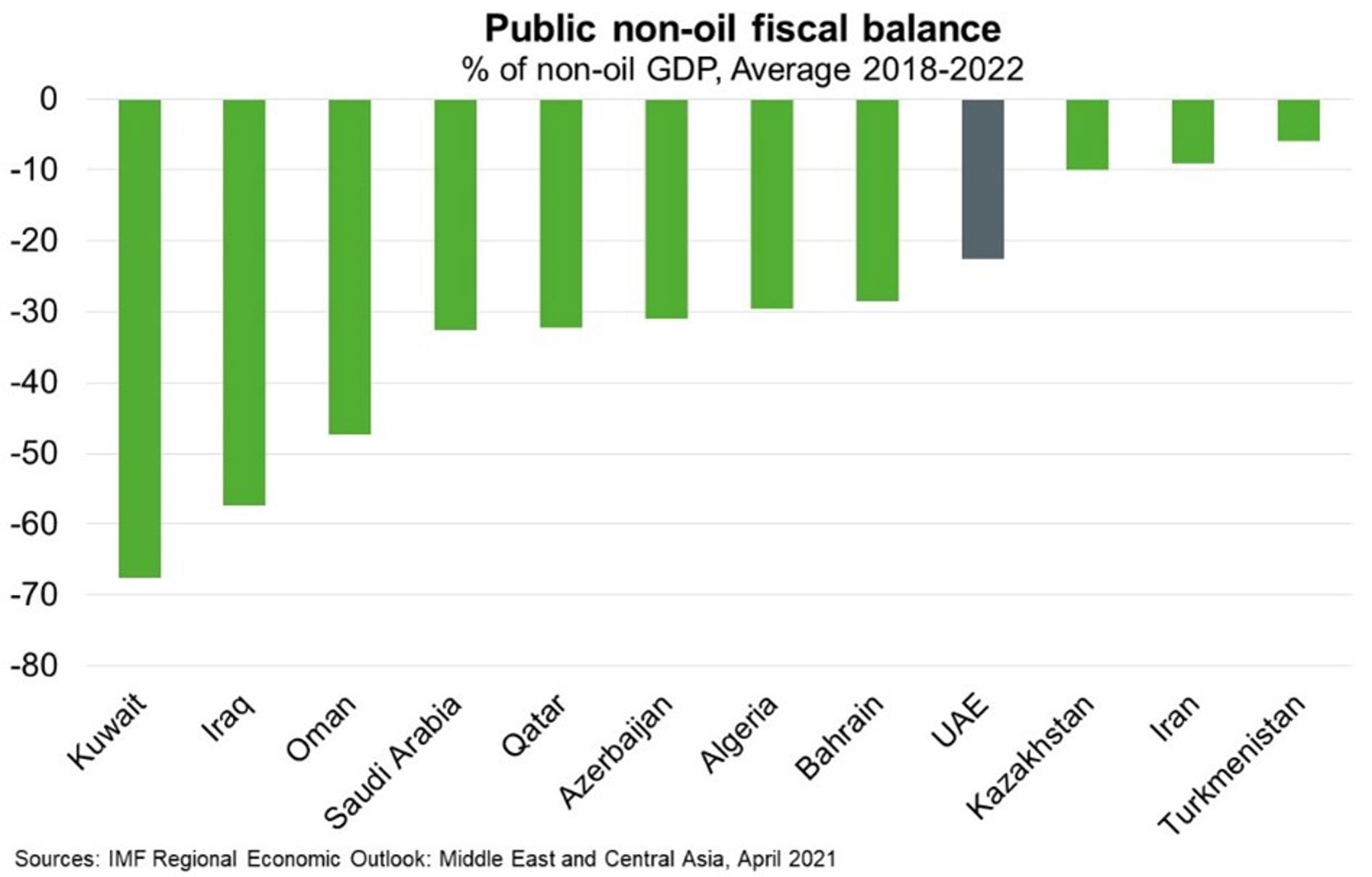UAE—Diversification efforts accelerate amid decarbonisation targets
The Dubai Expo—a major goal of the UAE’s economic policy for many years—opened this month. Prior to the pandemic, the event was forecast to contribute 1.5% to GDP over the course of its six months. Indeed, the IMF recently noted that after a sharp economic contraction of 6.1% last year, the recovery is gaining momentum—helped by tourism and domestic activity related to Expo along with the UAE’s robust economic and health response to the pandemic. While 85% of the population are fully vaccinated, 95% of people have received at least one dose.
In addition to attracting 25 million visits, the Expo was also designed to provide a longer term boost to the private sector and reduce heavy dependence on hydrocarbon revenues (Chart) (30% of GDP). Adjusting to an environmentally sustainable growth model is increasingly urgent—the UAE recently became the first Gulf state to commit to reducing carbon emissions to net zero by 2050. The International Energy Agency suggests the most technically feasible, cost‐effective and socially acceptable pathway to achieve global net zero emissions by 2050 would see oil demand decline by 75% and gas demand decline by 55% between 2020 and 2050.
Expo attendance may disappoint given COVID-19 related travel restrictions and hesitancy and mandatory social distancing. However, the UAE has led regional efforts to create an enabling environment for business and entrepreneurship. Last month, 50 new economic initiatives were announced to boost competitiveness and attract US$150 billion in FDI over the next nine years. Despite the daunting need for economic transformation and pandemic-related risks, this bodes well for continued bright prospects in Australia’s largest Middle Eastern export market (19th largest overall). Sectors that offer the best opportunities for Australian capabilities are education, agrifood, health, defence and infrastructure.

